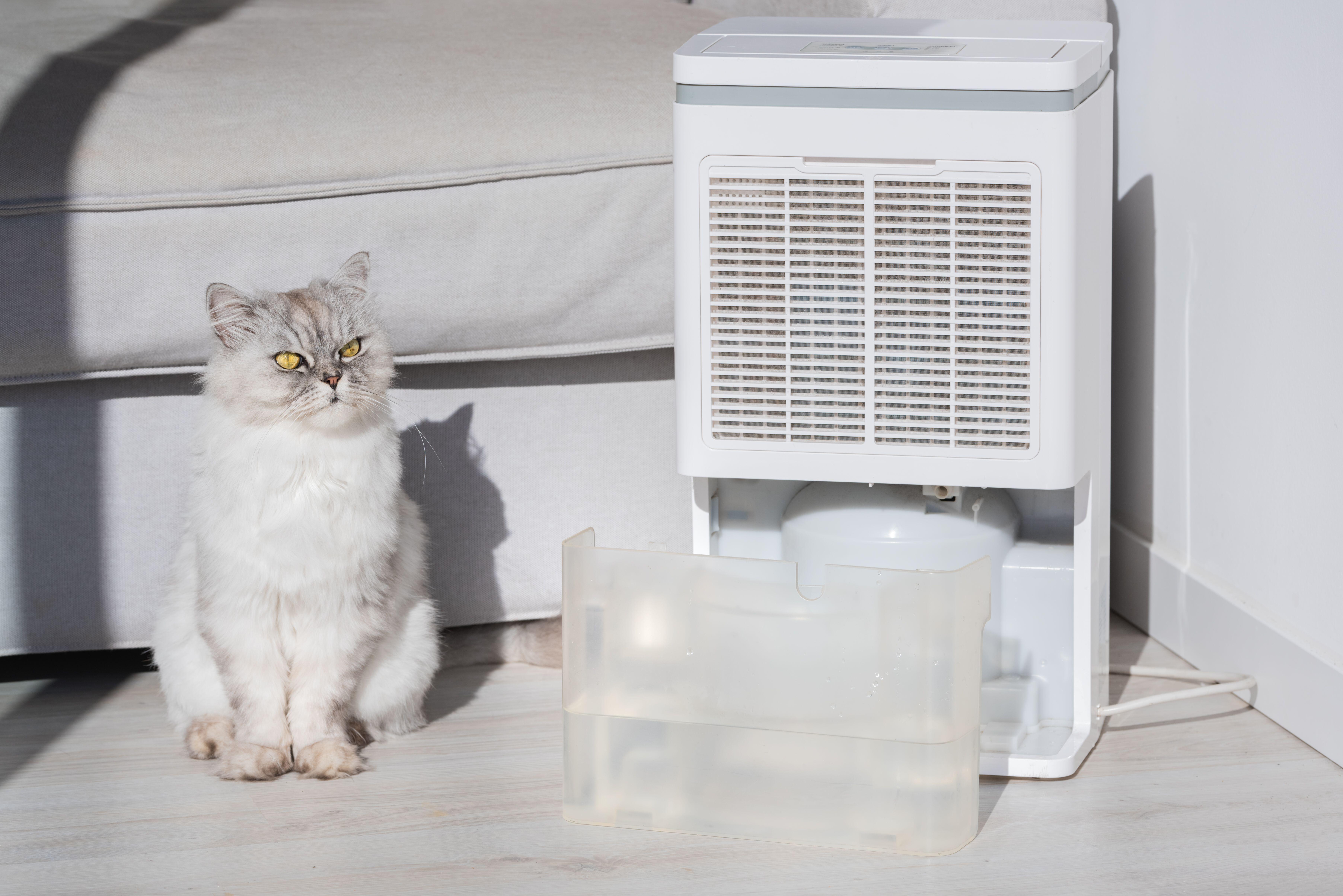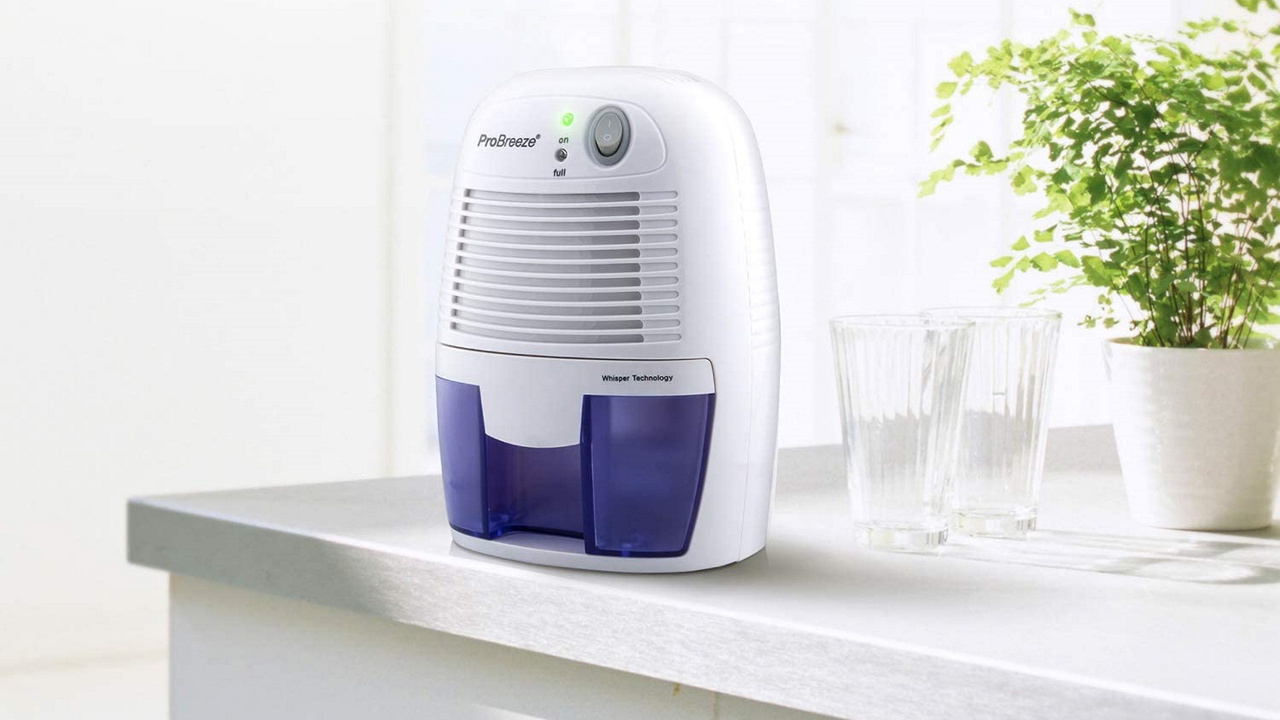How to clean a dehumidifier to keep your home's air as fresh as can be
Knowing how to clean a dehumidifier means prolonging the life of your kit and making your home a happier place to live


Since you're here, you likely want to know how to clean a dehumidifier. You may not have thought about this when you bought a dehumidifier for whatever reason. Perhaps you're still using it to clean your home's air, to dry your laundry, or to keep that pesky mold and damp at bay.
Whatever the reason for having a dehumidifier, it's a hard working bit of kit that deserves a clean every once in a while. In fact a clean is essential to make sure it's working at its optimal.
So how do you actually clean a dehumidifier? With all its parts you'll need to know where to look and what to do. Specifically the filter and coils are going to need your keen eye and cleaning tools. Read on to find out just what's needed to keep your dehumidifier fighting the good fight against excess moisture in your home.
You may also want to enhance your home air care by looking at the best air purifiers.
How to clean a dehumidifier
1. Clean your dehumidifier filter

One of the most important parts of a dehumidifier, which works very hard and needs your care, is the filter. These vary from manufacturer and model so be sure to check yours to see how often this should be done. Some have permanent filters while others are disposable, so getting this right is important.
If your filter gets clogged or dirty this will restrict dehumidifier benefits - the airflow will be blocked and it won't do its job as well. It also means the device can be holding potentially harmful microorganisms you don't want spread around your home.
This cleaning process can kick out dust so wearing a mask and gloves, especially if you have allergies, is a good idea.
The Livingetc newsletters are your inside source for what’s shaping interiors now - and what’s next. Discover trend forecasts, smart style ideas, and curated shopping inspiration that brings design to life. Subscribe today and stay ahead of the curve.
Unplug the dehumidifier first, then remove the filter and use a vacuum to suck as much dirt and debris out as you can. Then wash the filter in warm, soapy water. Rinse this off to get rid of any excess soap then leave to totally dry before placing back in the unit. Ideally leave near a radiator or other heat source, to avoid damage by rushing the drying process.
2. Clean your dehumidifier coil

A dehumidifier coil also needs a clean to make sure the device is running at its best and is as clean as possible. These coils are how the system works, pulling in air over the cold coils to cause condensation which means the water drips into the collection bucket. Then the air goes over warm coils before being passed back into the room, dry.
Blockages of hair, dust and other cloggers can affect your coils' performance. Check your manufacturer's guidance first, as coils vary from machine to machine.
Turn off your dehumidifier a few hours before you start cleaning so all coils are at room temperature. Find the coils at the back or inside then use a vacuum to remove dust and grime. Then use a soft brush to clean the coils in combination with a spray detergent or mix of water and vinegar. Rinse off the residue, ideally using a spray. Let the coils totally dry before turning your dehumidifier back on.
3. Clean your dehumidifier bucket

The bucket at the bottom of your dehumidifier collects plenty of water as it works. Even if you throw this out regularly you may find that it can build up bacteria and mold. This typically happens when the water is left standing, so emptying it as often as possible is important.
Ideally you'll want to remove the bucket and wash it out using soap and water or, for a really deep clean that totally kills the mold, use bleach and water. Either way make sure you rinse the bucket thoroughly before placing it back into the unit.
If you don't want to empty the bucket from the machine then you can use a hose to let it drain out. Then use the hose to add soapy water and remove that. Be sure the hose is also clean before you start using this.
4. How often should I clean my dehumidifier?

A dehumidifier may not need cleaning as often as you think. That said, it all depends on where you are using it and how much use it gets.
If this is being used day and night out in a shed where there is a lot of dirt, then cleaning at least weekly will be needed.
If you're using your dehumidifier in your home and you have pets, or a dusty home, then you may also find it needs cleaning every few weeks.
If you home is fairly clear of dust and hair then you may find that cleaning it every two months is enough. That said, emptying the water bucket after each use is always advisable.

Luke is a veteran journalist and editor of over two decades where he has written about everything but specialises is technology, science, health and fitness, smart homes and health. He contributes to Real Homes, T3, Tom's Guide and TechRadar, among many other titles. As a father of two, any spare time he gets is enjoyed surfing, reading, hiking, camping and generally getting out in nature.